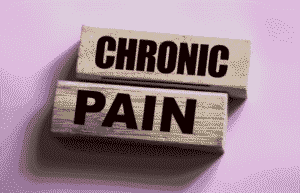Chronic Radiation Proctitis: Causes, Symptoms, Diagnosis, and Effective Treatments
Chronic radiation proctitis is a long-term complication of radiation therapy involving inflammation and damage to the rectum. Discover its symptoms, causes, diagnosis, and treatment options for this painful condition.
Table of Contents
Radiation Proctitis
Radiation proctitis is a condition characterized by inflammation in the rectum following radiation therapy, particularly for pelvic and abdominal cancers such as prostate, cervical, uterine, bladder, and colon cancer. This inflammation affects the lining of the rectum and leads to uncomfortable and often debilitating gastrointestinal symptoms.
Radiation proctitis can be acute or chronic. While acute radiation proctitis often begins during or shortly after radiation treatment, chronic radiation proctitis may develop months or even years after treatment ends. The delayed onset can make diagnosis challenging, especially in patients who are no longer undergoing cancer treatment.
Types of Radiation Proctitis
1. Acute Radiation Proctitis
Acute radiation proctitis usually arises within six weeks of starting radiation therapy. It is caused by direct damage to the rapidly dividing cells in the rectal mucosa. Symptoms of radiation proctitis include:
Diarrhea
Tenesmus (a frequent urge to defecate)
Mucous discharge
Cramping
Mild rectal bleeding
The condition is often self-limiting. With supportive care, proctitis may heal once radiation stops.
2. Chronic Radiation Proctitis
Chronic radiation proctitis develops slowly, sometimes appearing more than six months after therapy ends. The term “chronic radiation proctitis” refers to persistent and often progressive inflammation of the rectum, fibrosis, and ischemic injury to the blood vessels. In some patients, it may develop up to two to three years post-treatment.
This type is more difficult to manage due to structural damage in the rectum, and the symptoms don’t go away easily.
Causes of Radiation Proctitis
The primary cause of radiation proctitis is radiation therapy to treat cancer, particularly in areas near the pelvic cavity. When the rectum is exposed to high-energy radiation, it damages the mucosal lining, blood vessels, and surrounding tissues.
Radiation proctitis occurs due to:
Radiation injury to the epithelial lining and small blood vessels
Loss of regenerative capacity of mucosal cells
Inflammation in the lining and muscle layers of the rectum
Oxidative stress and chronic ischemia
Damage from radiation therapy and intensity-modulated radiation therapy
While radiation helps destroy cancer cells, it can also cause rectal pain, fibrosis, ulcers, and bleeding in nearby healthy tissues. Radiation damage to the rectum is an unfortunate but recognized complication of radiation therapy.
Risk Factors
The risk of developing radiation proctitis increases based on several factors:
Types of radiation used (e.g., external beam, brachytherapy)
Total radiation dose (>45 Gy to the rectum)
Larger radiation fields or poorly focused beams
Preexisting inflammatory bowel disease
Obesity or diabetes
Advanced age
Surgical resection near the rectal area
Inadequate bowel preparation before radiation therapy
In addition, people receiving combined pelvic radiation and chemotherapy are at a higher risk due to increased sensitivity of the rectal tissue.
Symptoms and Clinical Manifestations
The clinical manifestations of radiation proctitis can vary from mild to severe. Symptoms are often worse in the chronic phase due to permanent structural changes.
Symptoms of Proctitis Include:
Chronic rectal bleeding
Bleeding and discharge from the anus
Strictures (narrowing of the rectal canal)
Fecal incontinence
Painful bowel movements
Constant feeling of rectal fullness (tenesmus)
Mucous discharge
Ulceration or necrosis in the lining of the rectum
Diarrhea, often persistent and watery
Other complications include diversion proctitis in patients who undergo colostomy and rare but serious conditions like fistulas or perforation.
Diagnosis
A proper diagnosis requires both clinical evaluation and imaging or endoscopic confirmation. When patients present with symptoms of proctitis, doctors follow these steps:
Diagnostic Approach:
Take a detailed history (including prior radiation exposure)
Ask about your symptoms and bleeding patterns
Perform a sigmoidoscopy or colonoscopy using a tube with a camera to visualize the damage
Take biopsies to rule out eosinophilic proctitis, radiation enteritis, inflammatory bowel disease, or cancer recurrence
During sigmoidoscopy, the rectal mucosa may show telangiectasias, ulcers, pallor, and friability—typical of radiation proctitis.
Treatment Options:
Managing chronic radiation proctitis involves relieving symptoms, controlling inflammation, and preventing complications. Treatment may include medical, endoscopic, and surgical interventions depending on your symptoms and causes.
1. Lifestyle & Diet Changes
Following a low-residue diet to reduce bowel movement frequency
Increasing hydration and avoiding irritating foods (spicy, caffeinated, or high-fat items)
Taking probiotics and anti-diarrheal medications
2. Medications
Sucralfate enemas to coat and heal mucosal surfaces
Mesalamine suppositories or corticosteroids for inflammation
Metronidazole or ciprofloxacin for secondary bacterial infections
Formalin instillation in severe bleeding cases
Pentoxifylline and tocopherol to improve blood flow and reduce fibrosis
3. Endoscopic Therapy
Argon plasma coagulation (APC), the gold standard for bleeding from vascular ectasias
Laser therapy and bipolar electrocoagulation
Intrarectal application of formalin to stop chronic bleeding
4. Surgical Management
Surgery is reserved for cases that don’t respond to medical therapy, especially when there are strictures, perforations, or severe pain. Options include:
Fecal diversion (temporary colostomy)
Rectal resection in life-threatening cases
Surgery comes with risks and is usually a last resort for patients with chronic radiation injury.
Prevention
To prevent radiation proctitis, oncologists and radiation specialists aim to minimize radiation exposure to healthy tissues.
Prevention Methods:
Use of advanced radiation therapy techniques like intensity-modulated radiation therapy (IMRT)
Placement of hydrogel spacers in prostate cancer patients to separate the prostate from the rectum
Adequate bowel preparation before each session
Fractionation (delivering radiation in smaller doses over time)
Preventive strategies are particularly important because once chronic radiation proctitis develops, it is harder to treat and may significantly affect quality of life.
Living with Chronic Radiation Proctitis
Chronic radiation proctitis can be a challenging condition. Managing long-term symptoms like diarrhea, rectal bleeding, and discomfort may require ongoing care and lifestyle adjustments.
Follow your treatment plan consistently
Monitor your bowel habits and bleeding episodes
Maintain a healthy diet and avoid smoking and alcohol
Keep up with follow-up appointments
Work with a gastroenterologist experienced in managing radiation injury
Remember, radiation proctitis may not go away completely, but it can often be controlled with proper care.
Conclusion
Radiation proctitis is inflammation caused by radiation therapy for cancer, especially in pelvic organs like the prostate and cervix. Whether acute or chronic, it causes significant discomfort due to inflammation in the rectum and damage to the rectal lining.
If you or a loved one has undergone radiation therapy and starts experiencing symptoms like rectal pain, bleeding, or diarrhea, consult your healthcare provider immediately. Early diagnosis and intervention can prevent complications and improve quality of life.
Thanks to advances in radiation therapy techniques, we now have better ways to reduce exposure and support patients who may develop chronic radiation proctitis. Still, awareness, timely diagnosis, and a multidisciplinary treatment approach remain the cornerstones of effective management.



